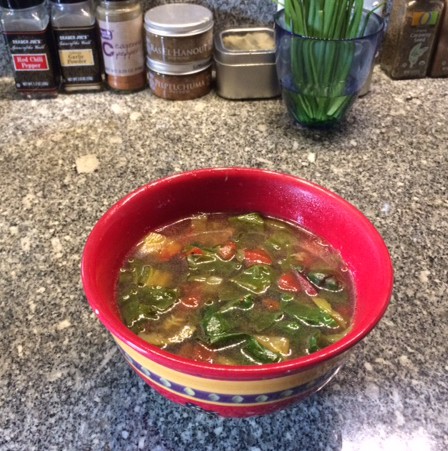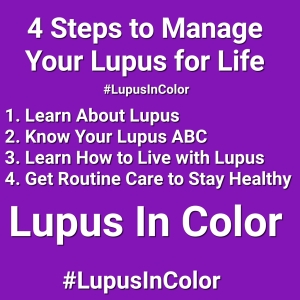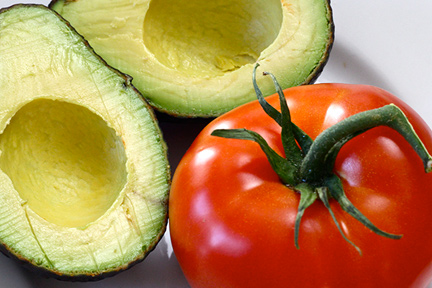Thursday, December 31, 2015
Wednesday, December 30, 2015
Teaser! Toni Braxton's Lifetime Movie 'Unbreak My
Monday, December 21, 2015
What You Need to Know About Leg Pain
Monday, December 7, 2015
Benefits of coconut oil

Right off the top of the dome I can think of at least 5 things I do daily with coconut oil. It’s like if I run out, I’m SOL. It has been a major factor in this 5 year long health journey. It seems like everyday I can find a new use for it which allows me to take off another commercial item that I rely on daily. From cooking to bathing, coconut oil is of much importance to me.
Not only is coconut oil durable but very nutrient dense. It is rich in antioxidants and helps to remove any toxins that could cause colds or any other illnesses. It is also rich in good fats that supports the organs and cells of the body.
I found it to be very useful during my early years of my natural/plant-based journey. Early on, I always had issues with my hair thinning. Literally, there would be patches of hair falling out, leaving me with very thin brittle hair. I started using coconut oil mixed with caster oil and my hair grew back stronger and faster than ever before. The coconut oil kept it moisturized and gave it strength while the caster oil thickened it up and added in the growing process.
Another very useful benefit with coconut oil is that is removed scarring and dark marks. While battling lupus I frequently suffered from rashes and inflammation of my skin. My face and neck seems to give me the most trouble. Doctors gave me all kinds of creams and steroids but none of them worked for me. So I started mixed coconut oil with Shea butter and saw change instantly. Marks that I had for years were dissolving. I suffered from terrible pimples and that even got better the more I used it. My skin felt hydrated and so much softer. The antioxidants in coconut oil reverses signs of aging and is a natural sun block (something I don’t need since I’m already chocolate lol).
Daily I use coconut oil to brush my teeth and oil pulling(a fancy way to say gargle). For years I suffered staining on my teeth from medications, after a few months of brushing with coconut oil I saw the difference in my teeth as well as the sensitivity went away. Mixed with baking soda, coconut oil removed more plaque and residue from my teeth than any toothpaste I’ve ever use. Plus i don’t suffer from BGs in the morning after brushing my teeth.
To make a long post short, I LOVE coconut oil. I use it for literally everything and I stand by its benefits.
SN: make sure to buy unrefined, organic, cold pressed coconut oil. That insures no excess toxins are getting into your system.
Monday, November 23, 2015
Exercises to Help Manage Back Pain
Be sure to stretch and warm up a little first. Avoid toe touches however. This exercise stresses the ligaments and disks in the spine and could make your pain worse. If you have lower back pain, partial crunches are good. They will strengthen the muscles in the back and stomach. Here you lie on the floor crossing your arms in front of you. You tighten your abdominal muscles and lift yourself up. Take a breath every time you rise and breathe out as you descend. Don’t use your elbows or arms to lift up. Make sure your feet are flat and that your tailbone never leaves the mat. Do eight to 12 of these and slowly increase as you get used to doing them.
Sit-ups are actually not so good. They put pressure on the spine and only really exercise the hips. Hamstring stretches are good for the back. Lie down and take a towel about the size of a hand towel with you. Put it on the middle of the bottom of your foot. Extend your leg out slowly and hold on to each end of the towel, guiding the leg up. Hold for 30 seconds then bring it down again. Do each leg two to four times. Practice these and you’re bound to notice the difference.
Talk to your doctor before taking on a new regimen of exercises for your condition, and see which ones are right for you. For serious conditions a physical therapist may be necessary. For others, a personal trainer who knows how to accommodate back conditions also proves helpful. Exercises that are not recommended for your condition could actually make it worse, so make sure to discuss the issue at length with a professional.
Friday, November 20, 2015
Protect Yourself this Cold & Flu Season
Temperatures are dropping and the holiday season is upon us!
 Although we’re immersed in quite a magical time of year, it’s also the beginning of cold and flu season. Not so magical after all!
Although we’re immersed in quite a magical time of year, it’s also the beginning of cold and flu season. Not so magical after all!- Avoid anyone- including family members- with symptoms of fever
 (over 100° F), nausea, vomiting, or diarrhea. Specifically you should avoid close, personal contact such as hugging, kissing, and shaking hands.
(over 100° F), nausea, vomiting, or diarrhea. Specifically you should avoid close, personal contact such as hugging, kissing, and shaking hands. - Wash your hands (tops, palms and fingers) frequently with hot, soapy water for at least 15 seconds.
- Remember that surfaces- especially in bathrooms, on shared office equipment, on store countertops, gas pump handles, any surface of the car, and in restaurants- can expose you to germs. Keep alcohol-based gel or wipes handy, both out in public and at home.
- Avoid touching your eyes, nose or mouth. Germs spread this way
- Shield coughs or sneezes with the crook of your arm. Do not use your hands or handkerchiefs as they carry moisture and spread viruses.
- Stay home from work or school if you are sick.
- Please remember that you should never discontinue medications used to treat your lupus without first consulting your doctor!
Monday, November 9, 2015
Soup from Scratch is Easy
Thursday, November 5, 2015
4 Steps to Manage Your Lupus for Life
Monday, November 2, 2015
Lupus Transformation

Tuesday, October 20, 2015
Wellness
Monday, October 12, 2015
At the gym, let go of the handrails on the treadmill!

Saturday, October 10, 2015
My Lupus Story with Lupus Connection
My full story will be up on LUPUS CONNECTION (which I keep saying Lupus Connect in the video). If you're interested in them, please visit http://lupusconnection.net/
Monday, October 5, 2015
Sometimes combining certain foods can improve their health benefits.
Monday, September 28, 2015
CHANGE YOUR FOCUS
Tuesday, September 15, 2015
While battling Lupus you need
Thursday, September 10, 2015
Avocado Spinach “Pasta” Sauce – AIP/Paleo/Gluten Free/Vegan IN SEARCHOF SIMPLICITY: by MY JOURNEY WITH LUPUS
- Start by cooking your spaghetti squash.I do this by cutting it in half, scooping the seeds, and placing them inside down in a pan with a bit of water. Then I cook at 375 F for about 30 – 40 minutes.
- Place all ingredients into a blender or food processor, I use a vitamix. Blend until smooth.
- Heat a pan on medium heat with a little oil – coconut, avocado, etc… Add the squash and saute slightly. Pour sauce over squash and heat through stirring often. This only takes about 5 minutes. This step means you’ll have a nice warm dish and prevents any leftovers from browning the next day.
- Serve and enjoy.
Monday, August 31, 2015
The Spoon Theory
 My best friend and I were in the diner, talking. As usual, it was very late and we were eating French fries with gravy. Like normal girls our age, we spent a lot of time in the diner while in college, and most of the time we spent talking about boys, music or trivial things, that seemed very important at the time. We never got serious about anything in particular and spent most of our time laughing.
My best friend and I were in the diner, talking. As usual, it was very late and we were eating French fries with gravy. Like normal girls our age, we spent a lot of time in the diner while in college, and most of the time we spent talking about boys, music or trivial things, that seemed very important at the time. We never got serious about anything in particular and spent most of our time laughing.As I went to take some of my medicine with a snack as I usually did, she watched me with an awkward kind of stare, instead of continuing the conversation. She then asked me out of the blue what it felt like to have Lupus and be sick. I was shocked not only because she asked the random question, but also because I assumed she knew all there was to know about Lupus. She came to doctors with me, she saw me walk with a cane, and throw up in the bathroom. She had seen me cry in pain, what else was there to know?
Share this:
Friday, August 28, 2015
Need an energy boost? Go for a walk!
Thursday, August 27, 2015
Preventing a Lupus Flare
 One of the hardest things about living with systemic lupus is coping with unpredictability; if you have lupus, you will go through periods when your disease seems to be quiet and periods when it’s active and your symptoms worsen. These periods of feeling worse are known as lupus flares. Although there is no way you or your doctor can completely predict or prevent a lupus flare, you can identify and try to avoid known triggers to reduce your risk for flares. Making appropriate lifestyle changes can also help reduce your risk for a lupus flare.
One of the hardest things about living with systemic lupus is coping with unpredictability; if you have lupus, you will go through periods when your disease seems to be quiet and periods when it’s active and your symptoms worsen. These periods of feeling worse are known as lupus flares. Although there is no way you or your doctor can completely predict or prevent a lupus flare, you can identify and try to avoid known triggers to reduce your risk for flares. Making appropriate lifestyle changes can also help reduce your risk for a lupus flare.The best thing you can do is live a healthy lifestyle,” says Ellen Ginzler, MD, a professor of medicine and chief of rheumatology at State University of New York Downstate Medical Center, in New York City. “Stay active, eat a healthy diet, stay out of the sun, and don’t smoke.”
Increased fatigue, New or worsening rash, Joint and muscle pain, Headache or dizziness, Sores or ulcers in the mouth, Swelling in the legs, Fever, Any new symptoms
When you think a flare is starting, it’s best to see your doctor as soon as possible.











